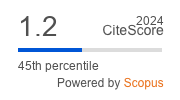Optimisation of technological parameters for production of lipid nanoparticles for delivery of mRNA
https://doi.org/10.33380/2305-2066-2025-14-4-2195
Abstract
Introduction. Gene therapy is actively developing through the use of mRNA agents for the treatment and prevention of various diseases. To manifest a therapeutic effect, it is necessary to deliver mRNA to target cells and induce the synthesis of target proteins. Key challenges include developing safe and efficient delivery systems. The critical quality attributes for lipid nanoparticles are average particle size, polydispersity index, and ζ potential.
Aim. To study and optimize the assembly conditions of lipid nanoparticles to control their basic characteristics.
Materials and methods. Ionizable lipid heptadecan-9yl(Z)-N-((4-dimethylamino)butyl)thio)carbonyl)-N-(2-(non-2-en-1-yloxy)-2-oxoethyl)glycinate (IL) and helper lipids – dipalmitoylglierophosphate (DPPC), cholesterol, and a-(3"-[1,2-di (myristyloxy) propanoxy]carbonylamino}propyl)-w-methoxypolyoxyethylene (DMG-PEG2000). Solvents: absolute alcohol, purified water. Buffer solutions: acetate buffer solution (pH 4.5), phosphate buffer solution (pH 7.4). Equipment: microfluidic installation Dolomite (Dolomite Microfluidics, Великобритания), Y-shaped polymer microfluidic chip with passive micromixer type "tesla coil", Nanosizer Zeta Pro nanoscale particle analyzer (LLC "Microtrack", Russia).
Results and discussion. The study examined the effects of TFR and FRR parameters on LNF properties. Characteristics such as hydrodynamic diameter (Z-average), average particle diameter (D50), polydispersity index (PDI) and ζ potential were analyzed. The study confirms that with increasing FRR, the average hydrodynamic and median particle sizes decrease. Increasing TFR also decreases Z-average and D50 through hydrodynamic focusing, but at TFR = 3200 μl/min, particle size increases due to decreased nanoemulsion stability and fine particle aggregation. The study did not reveal a direct relationship between FRR and PDI. Nanoemulsions with FRRs of 1 : 3 and 1 : 4 showed the greatest homogeneity. As TFR increases, the polydispersity of the nanoparticles decreases. In the study, the dependence of the ζ potential of lipid nanoparticles on the estimated process parameters was not found. However, as TFR increases, the ζ potential tends to increase.
Conclusion. In the study, the conditions for assembling lipid nanoparticles (LNP) using the microfluidic method were optimized. Mathematical models are proposed to control characteristics of nanoparticles. Optimal conditions for producing LNP: FRR = 1 : 3; 1 : 4; TFR 2000 to 3000 µL/min. If FRR = 1 : 5 and/or TFR > 3000 µL/min are used, the values may be outside the optimal range, which requires additional risk assessment.
About the Authors
Yu. M. KotsurRussian Federation
14A, Professora Popova str., Saint-Petersburg, 197022
S. D. Malkov
Russian Federation
14A, Professora Popova str., Saint-Petersburg, 197022
K. O. Zarifi
Russian Federation
14A, Professora Popova str., Saint-Petersburg, 197022
K. A. Gusev
Russian Federation
14A, Professora Popova str., Saint-Petersburg, 197022
D. N. Maimistov
Russian Federation
14A, Professora Popova str., Saint-Petersburg, 197022
E. V. Flisyuk
Russian Federation
14A, Professora Popova str., Saint-Petersburg, 197022
I. A. Narkevich
Russian Federation
14A, Professora Popova str., Saint-Petersburg, 197022
References
1. Hou X., Zaks T., Langer R. Dong Y. Lipid nanoparticles for mRNA delivery. Nature Reviews Materials. 2021;6:1078–1094. DOI: 10.1038/s41578-021-00358-0.
2. Zhu X., Tao W., Liu D., Wu J., Guo Z., Ji X., Bharwani Z., Zhao L., Zhao X., Farokhzad O. C., Shi J. Surface De-PEG-ylation Controls Nanoparticle-Mediated siRNA Delivery In Vitro and In Vivo. Theranostics. 2017;7(7):1990–2002. DOI: 10.7150/thno.18136.
3. Osochuk S. S., Kotsur Yu. M., Pozharitskaya O. N., Flisyuk E. V., Smekhova I. E., Malkov S. D., Zarifi K. O., Titovich I. A., Krasova E. K., Shikov A. N. Liposomes – metabolically active drug transport systems: classification, components, preparation methods, and stabilization. Part 1. Drug development & registration. 2024;13(4):60–77. (In Russ.) DOI: 10.33380/2305-2066-2024-13-4-1867.
4. Osouli-Bostanabad K., Pulig S., Serrano D. R., Bucchi A., Halbert G., Lalatsa A. Microfluidic Manufacture of Lipid-Based Nanomedicines. Pharmaceutics. 2022;14(9):1940. DOI: 10.3390/pharmaceutics14091940.
5. Roces C. B., Lou G., Jain N., Abraham S., Thomas A., Halber G. W., Perrie Y. Manufacturing Consideration for the Development of Lipid Nanoparticles Using Microfluidics. Pharmaceutics. 2020;12(11):1095. DOI: 10.3390/pharmaceutics12111095.
6. Ripoll M., Martin E., Enot M., Robbe O., Rapisarda C., Nicolai M.-C., Deliot A., Tabeling P., Authelin J.-R., Nakach M., Wils P. Optimal self-assembly of lipid nanoparticles (LNP) in a ring micromicser. Scientific Reports. 2022;12:9483. DOI: 10.1038/s41598-022-13112-5.
7. Guimaraes P. P. G., Zhang R., Spektor R., Tan M., Chung A., Billingsley M. M., El-Mayta R., Riley R. S., Wang L., Wilson J. M., Mitchell M. J. Ionizable Lipid Nanoparticles Encapsulating Barcoded mRNA for Accelerated in Vivo Delivery Screening. Journal of Controlled Release. 2019;316;404–417. DOI: 10.1016/j.jconrel.2019.10.028.
8. Palanki R., Han E. L., Murray A. M., Maganti R., Tang S., Swingle K. L., Kim D., Yamagata H., Safford H. C., Mrksich K., Peranteau W. H., Mitchell M. J. Optimized microfluidic formulation and organic excipients for improved lipid nanoparticlemediated genome editing. Lab on a Chip. 2024;24:3790–3801. DOI: 10.1039/D4LC00283K.
9. Hidayat A. F., Wardhana Y. W., Suwendar S., Mohammed A. F. A., Mahmoud S. A., Elamin K. M., Wathoni N. A Review on QbD-Driven Optimization of Lipid Nanoparticles for Oral Drug Delivery: From Framework to Formulation. International Journal of Nanomedicine. 2025;20:8611–8651. DOI: 10.2147/IJN.S534137.
10. Gimondi S., Ferreira H., Reis R. L., Neves N. M. Microfluidic Devices: A Tool for Nanoparticle Synthesis and Performance Evaluation. ACS Nano. 2023;17(15):14205–14228. DOI: 10.1021/acsnano.3c01117.
11. Nel A. E., Mädler L., Velegol D., Xia T., Hoek E. M. V., Somasundaran P., Klaessig F., Castranova V., Thompson M. Understanding biophysicochemical interactions at the nano-bio interface. Nature Materials. 2009;8(7):543–557. DOI: 10.1038/nmat2442.
12. Smith M. C., Crist R. M., Clogston J. D., McNeil S. E. Zeta potential: a case study of cationic, anionic, and neutral liposomes. Analytical and Bioanalytical Chemistry. 2017;409(24):5779–5787. DOI: 10.1007/s00216-017-0527-z.
13. Efremova U. A., Chugunova P. A., Ponikarovskaya E. S., Terninko I. I. Approaches to quality control of drug carriers. Drug development & registration. 2025;14(3):108–122. (In Russ.) DOI: 10.33380/2305-2066-2025-14-3-2075.
14. Schoenmaker L., Witzigmann D., Kulkarni J. A., Verbeke R., Kersten G., Jiskoot W., Crommelin D. J. A. mRNA-lipid nanoparticle COVID-19 vaccines: Structure and stability. International Journal of Pharmaceutics. 2021;601:120586. DOI: 10.1016/j.ijpharm.2021.20586.
Supplementary files
|
|
1. Графический абстракт | |
| Subject | ||
| Type | Исследовательские инструменты | |
View
(2MB)
|
Indexing metadata ▾ | |
Review
For citations:
Kotsur Yu.M., Malkov S.D., Zarifi K.O., Gusev K.A., Maimistov D.N., Flisyuk E.V., Narkevich I.A. Optimisation of technological parameters for production of lipid nanoparticles for delivery of mRNA. Drug development & registration. (In Russ.) https://doi.org/10.33380/2305-2066-2025-14-4-2195










































